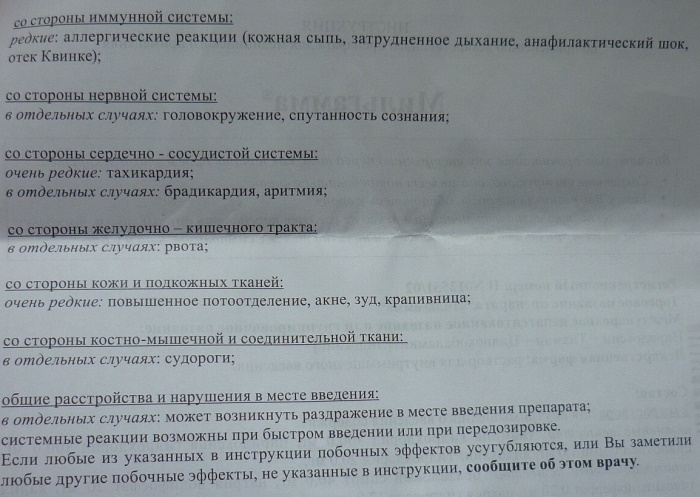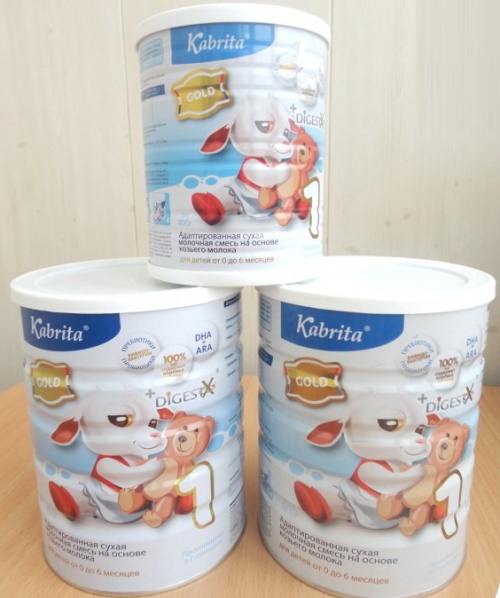In addition to the threat of cancer, this pathology brings a lot of inconvenience to the patient associated with impaired digestion and absorption of vitamins and other important chemicals. In view of the atrophy of the stomach must always be treated by combining medication and special medical diet.

What it is?
Atrophic gastritis - a chronic pathology characterized by thinning of the gastric mucosa and pronounced secretory failure. There are many reasons that can lead to atrophy of the mucous membranes, but most often it occurs because of an infection with Helicobacter pylori.
Causes of
Among experts there is no consensus on the causes that provoke the development of this disease. Among the factors that contributed to the atrophy of the gastric mucosa, called the following:
- the use of gross product and insufficient chewing of food;
- sodas, coffee, alcohol;
- smoking;
- constant overeating;
- eating large amounts of sharp, spicy and other products with an aggressive taste;
- hot or overly cold food;
- long-term use of medicines;
- Reflux (throw intestinal contents into the stomach).
All of these factors have on the mucous membrane irritant, eventually leading to the emergence in it atrophic processes.
The symptoms of atrophic gastritis
The main manifestations of atrophic gastritis caused by functional insufficiency of the stomach, develops on the background of the mucous membrane changes. Among these symptoms nabolyudaetsya:
- pain - dull aching pain, worse after eating, due to distension of the stomach wall;
- dyspeptic syndrome (syndrome digestive disorders) - reduction or complete loss of appetite, or burp air rotten food, nausea, feeling of heaviness and overflow in the epigastrium, putrid smell from the mouth, bad taste in the mouth;
- anemic syndrome - characteristic changes in the general analysis of blood, combined with fatigue, deteriorating portability of habitual physical activity, lethargy, apathy;
- bacterial overgrowth syndrome - borborygmus, flatulence, unstable chair;
- dystrophic syndrome - the result of malabsorption of vitamins and digestion of nutrients.
For the first time all of these features unobtrusive, but the progression of the pathological process develops rather quickly complete exhaustion.
Chronic atrophic gastritis
This flaccid disease, which occurs during gastric mucosal thinning, reduction of gastric acid production due to the reduced amount of iron.
Approximately half of the cases the disease is necessarily accompanied by a change in membrane structure, ie. E. it metaplasia. This is caused by decrease in the number of normal cells and glands and the formation of hybrids having this combination of features, which normally should not be.
Often, there is a replacement of gastrointestinal cells. In addition, the disease is characterized in that the progression of the inflammatory process involves anatomically around internal organs of the digestive tract, as well as a malfunction occurs circulatory and nervous systems.
Often chronic form is manifested by such signs as:
- pain in the stomach - is usually dull in nature and there is an empty stomach or after a certain time after eating the food;
- discomfort - determined pressure, bulging, feeling of heaviness and satiation;
- severe heartburn;
- belching with a sour unpleasant odor;
- flatulence;
- increased sweating;
- unpleasant sensations in the oral cavity associated with the appearance of an off-white plaque on the tongue and metallic taste;
- a significant reduction in body weight, which is caused by an aversion to food;
- pale skin;
- increased fragility of the nail plate and hair loss;
- the occurrence of inflammation in the gums;
- weakness and lethargy of the body.
In addition, there are specific attributes for some of the types of atrophic gastritis.

Diagnostics
Proper diagnosis of atrophic gastritis consists of techniques such as X-rays, FEGDS (Fibrogastroduodenoscopy), histological examination, complete blood count, ultrasound evaluation stomach function.
- An ultrasound can determine the smoothing of wrinkles, along with a decrease in body size.
- FEGDS shows mucosal thinning, changes its color to gray or pale pink, smoothness folding, increased vascular pattern. The ability to identify areas of metaplasia in the intestinal epithelium.
- Determination of the functional activity of the stomach is to measure pH of gastric juice to assess how the acidity in atrophic gastritis in this patient, and determine the activity pepsin.
Interestingly the initial information about the disease appeared in 1728, but the true beginning of the study of atrophic gastritis is a medical activity of the French names of Brousse. At autopsy he found in almost every case, the changes in the gastric mucosa and identified them as its inflammation. While his thoughts were wrong, as were the only changes in the body non-viable.
Later there was a version Kussmaul explaining atrophic gastritis with the violation of the nervous regulation of the body, but she was wrong. In the period from 1900 to 1908 Faber proposed a method of fixing the stomach medication with formalin, thus avoiding the problem of scientists from the post-mortem defects and clearly showed the presence of changes by type gastritis.
How to treat atrophic gastritis
The traditional regimen of atrophic gastritis in adults includes erakdikatsiyu Helicobacter pylori, if acid-fast bacteria have a significant impact on the pathogenesis. Methods of eradication of Helicobacter pylori are constantly being improved.
The task of eradication:
- suppress bacterial growth and preventing formation of their resistance to antibiotics;
- reduction in the duration of treatment;
- use of proton pump inhibitors for the purpose of improving health;
- reducing the amount of drugs, which significantly reduces the side effects of treatment;
Typically used three- and four component eradication scheme:
- As used proton pump inhibitors Omeprazole preparations, lansoprazole, esomeprazole, rabeprazole, pantoprazole, ranitidine bismuth citrate and others.
- As means of suppressing the activity of bacteria used antibiotics (tetracycline, penicillin), and the antibiotic metronidazole (Trichopolum). The dosage and frequency indicated by the doctor.
Influence on the development of autoimmune processes in atrophic gastritis have not yet learned the full extent. The use of hormones and other immunomodulators is not justified in most cases.
Pathogenetic therapy of atrophic gastritis involves the integrated use of drugs of various groups, among them:
- under conditions insufficient vitamins B12 enforce appropriate vitamin preparations by parenteral injection.
- means facilitating gastric digestion - preparations hydrochloric acid and gastric enzymes.
- means reducing inflammation - the juice of plantain or granular pharmacological preparations of plantain (plantaglyutsid).
- means influencing the production of hydrochloric acid as mineral water (4.17 Yessentuki and others). Although they are not drugs, but in some cases show high therapeutic activity.
- to protect the mucosa or aluminum is used bismuth preparations (bismuth basic nitrate, Vikalin, or Vikair Rother, Kaolin).
- means that regulate motor function of the stomach. Among the drugs in this group farmakologieskoy often use Domperidone and Cisapride.
- in recent years has been increasingly used in the treatment of gastrointestinal inflammation Riboksin. This preparation possesses properties useful in the treatment of atrophic gastritis.
In addition etiotrop, treatment is still on several fronts:
- diet therapy with the principles of mechanical, thermal and chemical shchazhenija;
- Replacement therapy with hydrochloric acid, enzyme preparations;
- stimulation of hydrochloric acid secretion (mineral water, medicinal charges, citric and succinic acids, and others.);
- protection of gastric mucosa gastroprotectives;
- and the use of regenerants reparants for restoring mucosal;
- application enveloping and binding agents;
- strengthening of gastric motility (prokinetic);
- physiotherapy.
All of the above drugs are prescribed during the active phase of gastric inflammation with signs of atrophy. During remission, the main principle of treatment - completion of missing for a complete digestive substances.

People's treatment of atrophic gastritis
To increase gastric acid secretion in atrophic gastritis with low acidity possible with the help of the popular methods of treatment:
- Beet juice drink half a glass before a meal.
- Potato juice - grate the potatoes on a fine grater, strain through cheesecloth. The resulting juice drink 1/3 cup 3 times a day. The duration of treatment of 10 days, after which you need to make a break for 10 days.
- Increase the level of acidity helps St. John's Wort - 2 tablespoons of chopped flowers pour a glass of boiling water and infuse for 2 hours. The resulting infusion drink three times a day, 20 minutes before meals.
- Brine sauerkraut - increases the production of gastric juice. Strain the infusion of cabbage and drink 1/3 cup 3 times a day before meals.
- Broth hips without sugar - to drink freshly brewed tea before meals.
- Juice of cabbage - the cabbage being rubbed on a grater or milled using a grinder, strain the juice through cheesecloth. The resulting juice should be stored in the fridge and drink for 30 minutes before eating 1/3 cup. Pre-need to warm it to body temperature.
Dieting during treatment of gastritis is very important! During the subacute form of the inflammatory process and the patient must adhere to restrictions in the diet.
Diet and proper nutrition
Dieting in atrophic gastritis - one of the most important factors influencing the effectiveness of treatment of this disease. As with other types of gastritis, normalization of required power, adherence and the exclusion of certain products to improve and facilitate the work of the stomach.
Prohibited products include:
- smoked, salted and pickled foods;
- fatty and fried foods;
- alcohol;
- tea, coffee, carbonated beverages;
- sweets
- spicy seasonings.
When exacerbation assigned a diet # 1a. In this case, the food is allowed only in liquid form, as well as mashed or mashed. Cooking must be boiled or steamed. The menu consists of nine main courses, it is mostly soups, also allowed the use of dairy products.
Such a diet with atrophic gastritis in the acute stage is a short character to eliminate the acute symptoms. Then there is the power of №1 diet menu. Limits are hot and heavily chilled dishes, and foods rich in fiber.
Upon reaching stable remission of the patient is transferred to the base diet №2. Food becomes more diverse, but should adhere to gentle heat treatment methods and steamed, cook, bake, while allowing light roast food. It allowed the use of fruits and vegetables, meat, fish, dairy products. Do not eat refrigerated foods with a rough texture.
Forecast
With timely treatment of complex prognosis. In 2002, Japanese scientists have demonstrated the possibility of regression of precancerous changes in the gastric mucosa after eradication (destruction) of the bacteria Helicobacter pylori. With chromoscopy it found that during five years after successful treatment of Helicobacter dimensions foci intestinal metaplasia decreased almost 2-fold compared with baseline.
Complete restoration of the mucosa structure in severe atrophy requires a long time, and in some cases, most likely impossible. When premalignant processes do not regress, but, on the contrary, progress, drastic treatments are applied up to the gastric mucosal resection.



